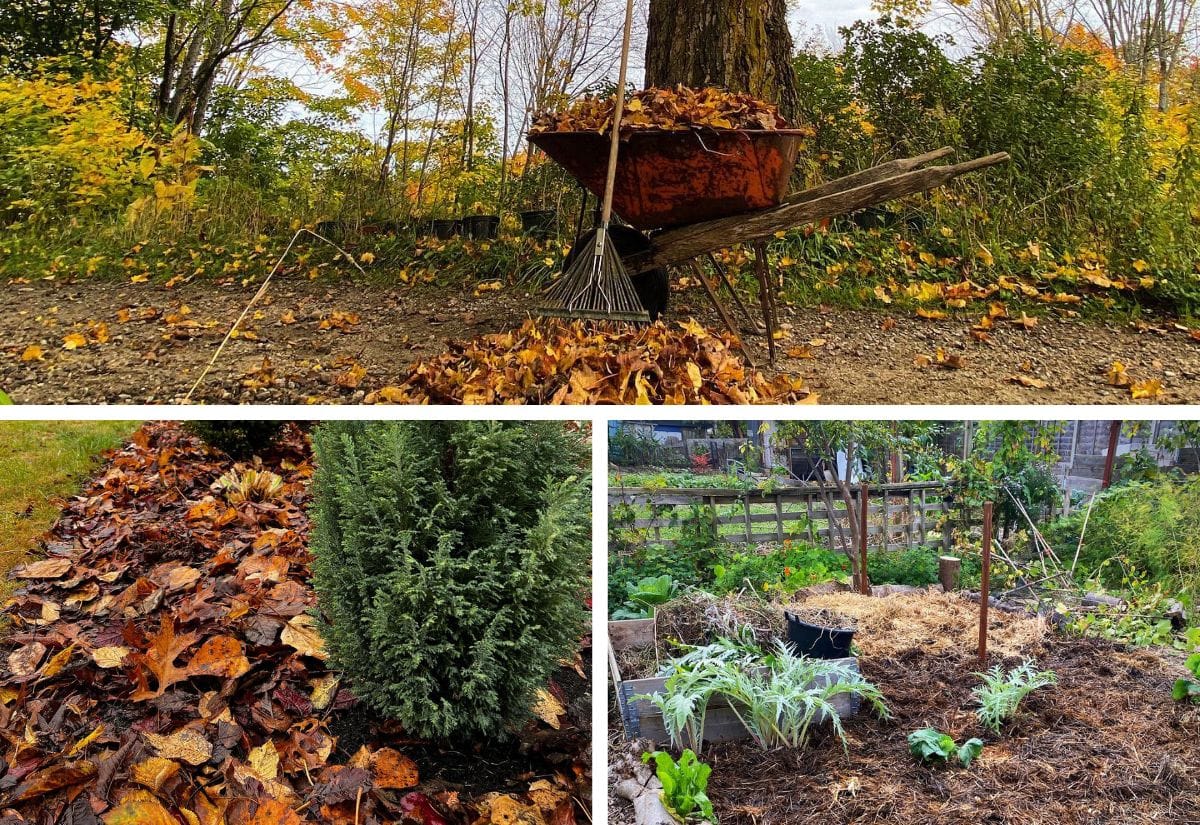
Fall is mulching time for us gardeners, to protect our soil, our land and our plants from the cold and wet winter climate! But there are many types of mulch, and some are better in your flower beds and borders, others in your vegetable patch, yet others in areas you are not cultivating yet! So, which goes where? Before you make mistakes, you’d better read on.
Knowing which mulch to use where saves you money and mistakes!
For every area, zone, function and also stage of your garden, I will help you pick the best type of mulch to use, from wood bark to lining, so you can save money, and protect your flower beds or vegetable garden in the best possible way over winter!
Different Types Of Mulch Are Good For Different Parts Of Your Winter Garden
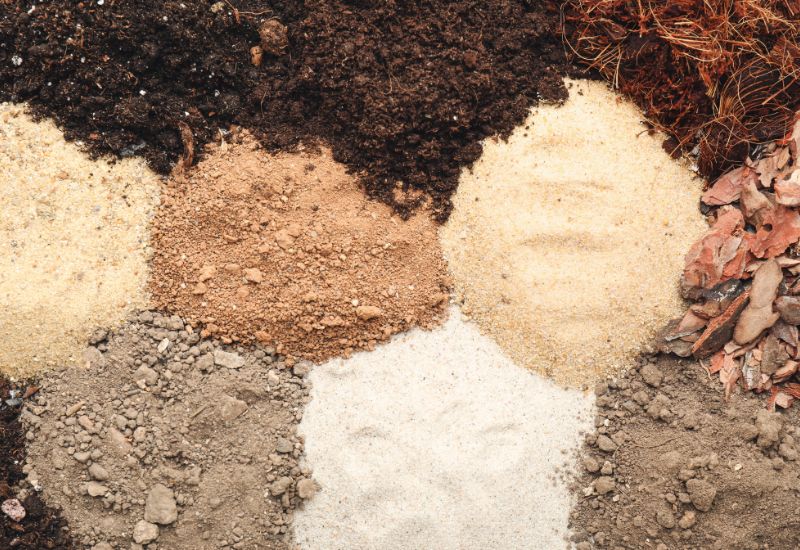
This article is really a list of tips, collected from experience, and based on the qualities of different types of mulch. This way, we can find out why it is best to use wood bark in flower beds and straw for your vegetable garden!
And here are the qualities, or elements that I will use to make my suggestions:
So, without further ado, here is my list of suggestions, which type of mulch is best for each part of your garden…
The Best Types Of Mulch For Each Part Or Zone Of Your Garden
From field to flower beds, from vegetable gardens to impoverished soil, there’s the right and the wrong type of much, and, here they are – well, only correct ones…
1: Mulch Your Flower Beds and Borders and Decorative Shrubs with… Wood Bark
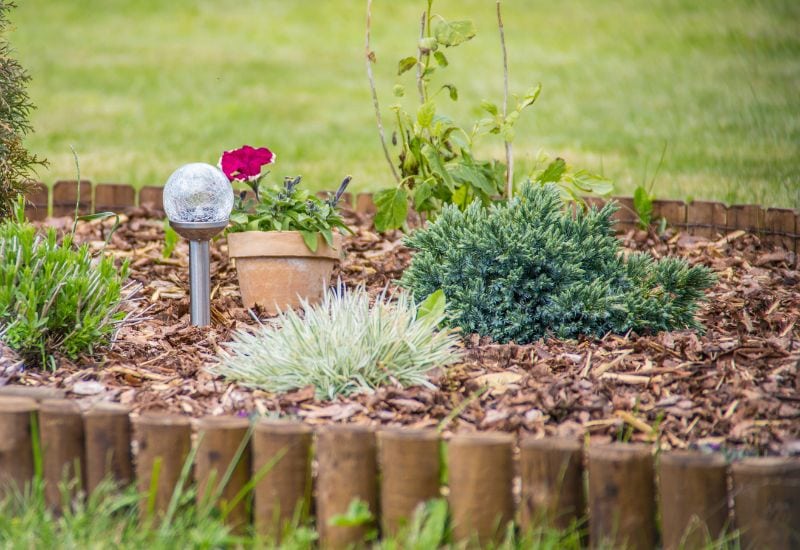
The main reason to use wood bark for very decorative parts of your garden is that it looks beautiful, and it can make your flower beds and borders look attractive even in late fall or winter, when there are few leaves and flowers (if at all)!
But it has other qualities too: it has outstanding insulation properties, and it allows the soil to breathe, ideal for very precious plants, and it also releases nutrients very slowly.
Then again, it is also very attractive, and this is why we all love it in our decorative gardens, and there are many types of wood bark you can use as mulch, from comparatively cheap pine and fir, starting at $15.00 per cubic yard (0.764 cubic meters) to… The sky is the limit, if you want to use teak…
With a cubic yard of mulch, you cover about 30 m2 of soil (324 square feet). So you can calculate how much it will cost you. And this is the main disadvantage of using wood bark as mulch: it is expensive!
While I can say that wood bark is overall the best generic mulch to use in your flowerbeds , I suggest you use it only for small areas of decorative gardens…
2: Mulch Your Vegetable Garden with Straw – Cheap, Easy to Use, But Not So Pretty!
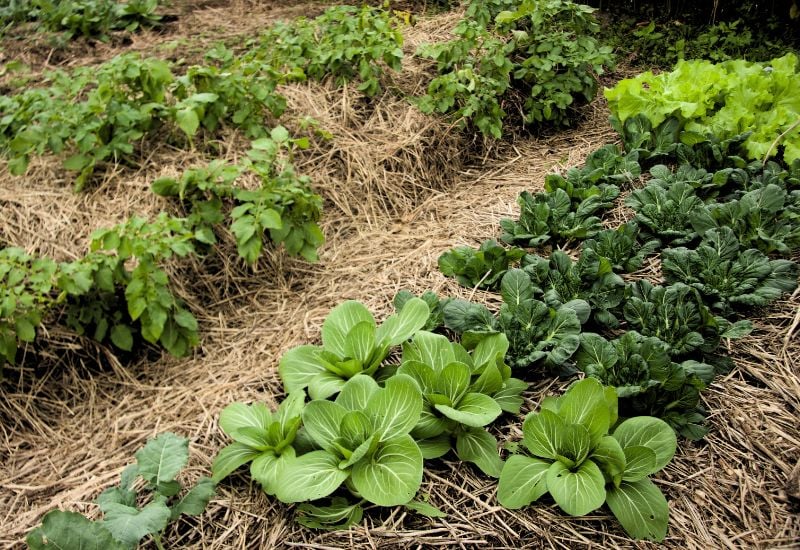
Straw is cheaper than wood bark, but it has excellent insulation properties from cold temperatures, and it is really good against weeds, which is what you need in a vegetable garden. But it is also very cheap! And you don’t want to spend a fortune on your cabbages and chard…
But make sure you do not compact it; that will make it into an excellent weed suppressor, but it also stops ventilation and soil breathing, and it can cause molds to develop.
And don’t worry, do it right and straw will not rot over winter, and it will protect your veggies till spring!
3: Grow Green Mulch In your Veg Beds
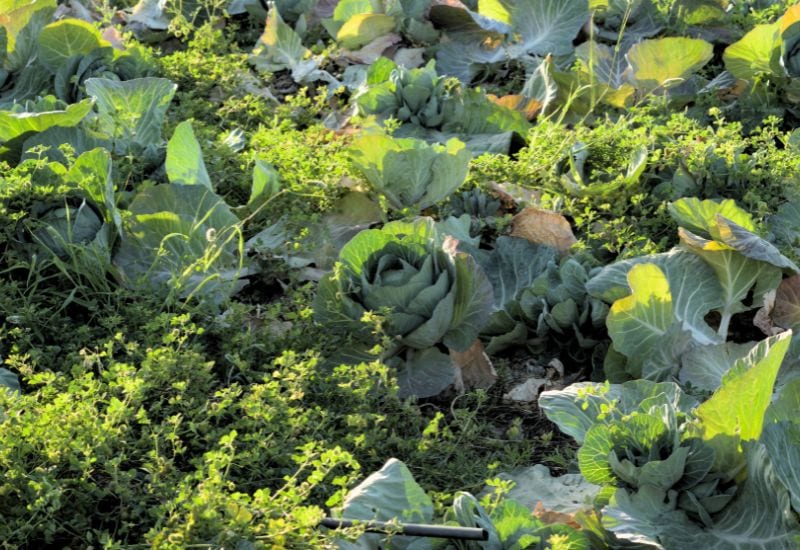
We know what a filed is, but what is green mulch though? Also called green manure, it is literally a low-growing cover crops interplanted or undersown with your main crops, alfalfa being the overall best for most climates… But any other nitrogen fixing plant will be excellent, depending on your climate zone. Clover is great in temperate regions, but if you live in hot a climate, you are lucky indeed!
In fact, you can grow lentils, chickpeas or fava beans as living mulch over winter and even harvest them in spring!
One thing you should never do though; leave your fields bare and uncovered over winter, or your soil will impoverish a lot!
Do you want some extra organic matter for your fields over winter? Get some animals (chickens, geese, even sheep) to graze your green mulch, but never let them eat it all up… Move them around.
4: Suppress Weeds on Your Land with Cardboard!
So, you have that patch on your land that is just weeds? Then cheap cardboard is your best friend. In fact, it is the best mulch for weed control. On the other hand, it won’t look good in your flower beds or under your roses…
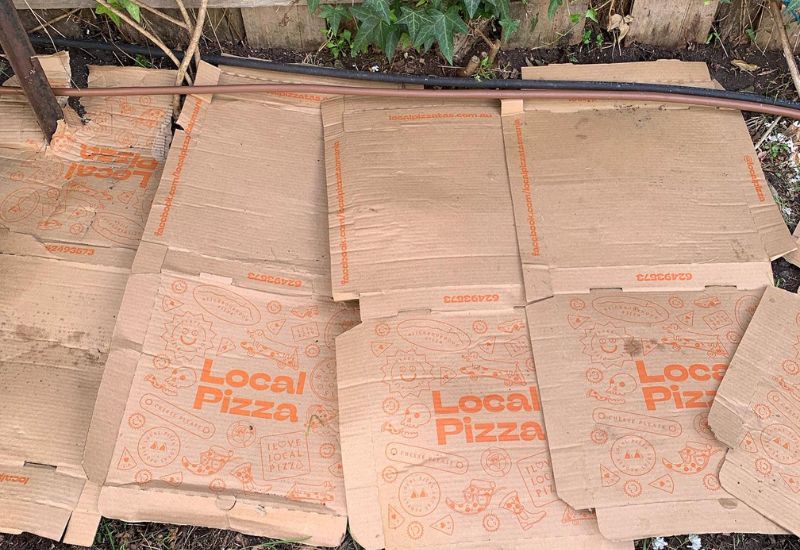
But it is ideal for areas that you have not cultivated yet, to eliminate all the weeds over winter, and have clear and usable land in spring. Just make sure that you overlap the cardboard sheets, and not even a single blade of couch grass will come through.
I also like to remove all sticky tape and other plastic stickers etc. first, so they don’t end up in my soil over winter.
5: Mulch Impoverished Soil Using Fallen Leaves
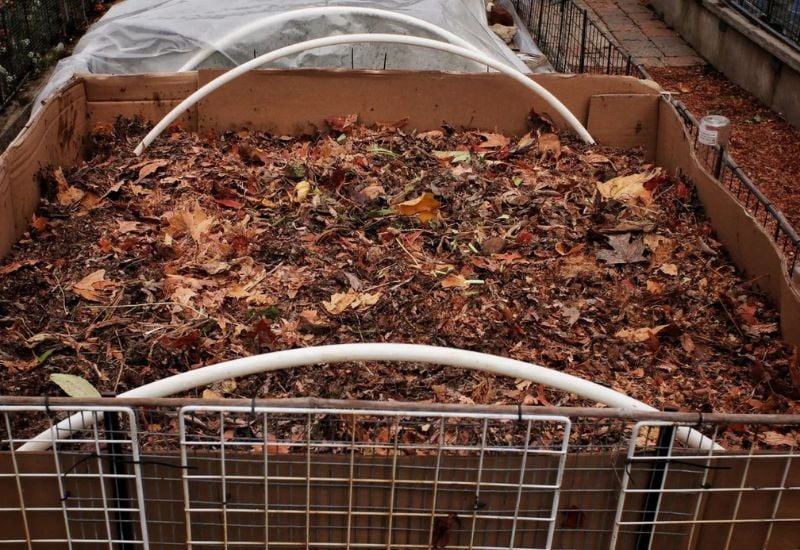
If you have an area where soil is poor, fall is the best time to make it fertile again, with leaf mulch! In fact, it has excellent feeding properties for your soil, giving lots of organic matter, but also calcium, potassium and magnesium (on top of carbon and other nutrients and micronutrients). And it will release it before spring comes, because it decomposes fairly fast!
But there is more… It creates a top layer of warm, decomposing and humid matter, the ideal ecosystem for lots of beneficial bacteria and small organisms that rejuvenate the soil and bring it back to life! And yes, leaf mulch (a.k.a., leaf mold) is also the very best for fungi and mushrooms, the real indicators of healthy soil!
6: Mulch More Hidden Parts of Your Ornamental Garden with Wood Chips… It Will Save You Money
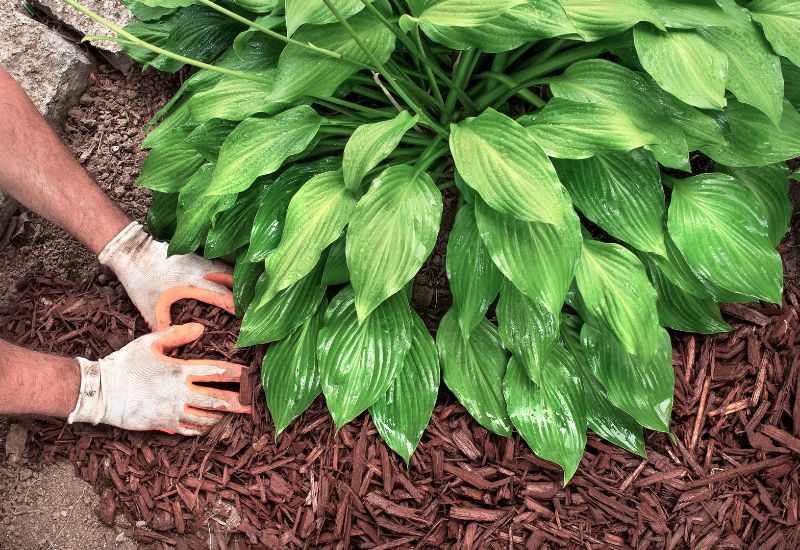
Wood chips have very similar mulching properties to wood bark, but they are much cheaper… So, if you have some back garden borders and shrubs that won’t be much “on display” during winter, save money and use wood chips instead…
Sometimes I even “cheat”… I put a layer of wood chips underneath and give it a thin cover of wood bark… Bits will uncover over time, but then again, I don’t have any garden parties or barbecues planned during winter.
I told you I would save you money…
7: Mulch Your Trees with… Their Own Leaves!
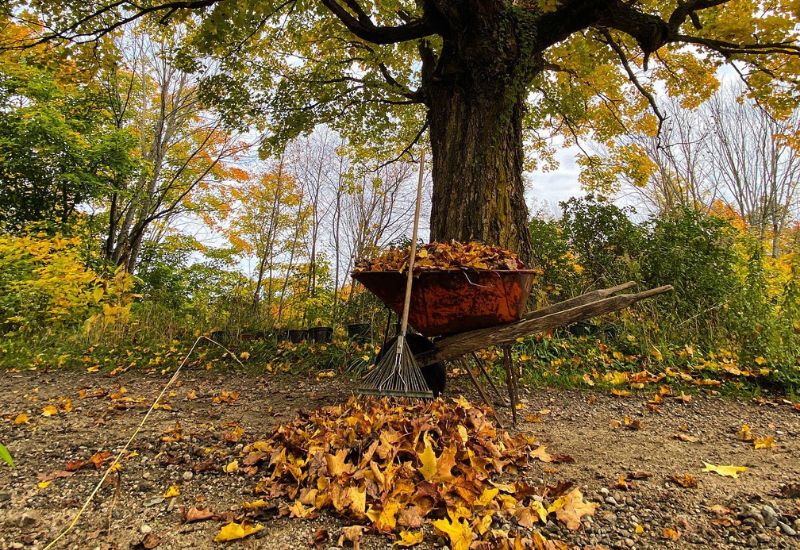
Trees produce their won mulch, and as all permaculturists know, Nature does it best! There is a reason why their own foliage is by far the best mulching for them… The precise mixture of nutrients and organic matter promotes the exact ecosystem and soil (type and pH) the tree species needs to thrive!
That includes the right microorganisms, fungi, mycorrhizae and good bugs too…
Of course, for your front garden, you may want to give it a thin decorative cover of wood bark for aesthetic reasons, but as we did before, “cheating” will save you money…
8: Mulch Your Lawn with Leaves… It’s not Just Romantic, It Is Healthy Too
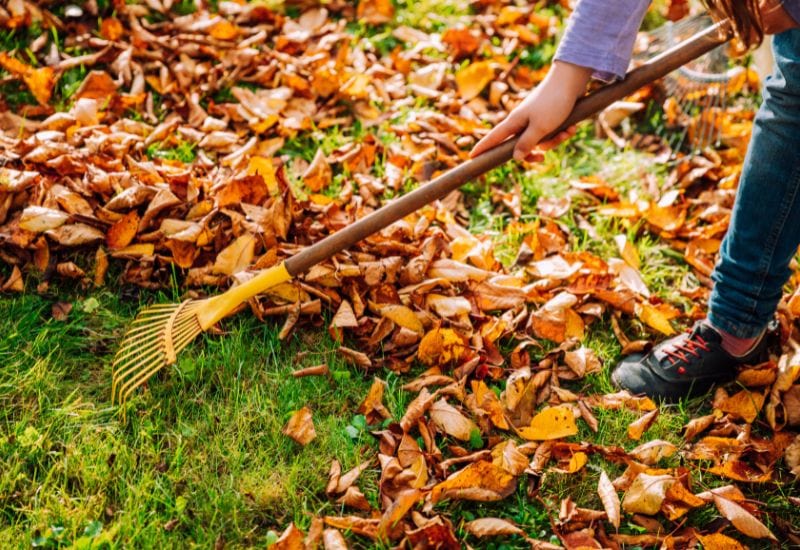
Brown, yellow, and red leaves on a green lawn look very old world and attractive, very seasonal indeed… But there is more, dried foliage will also mulch your precious lawn, protecting it over winter, and feeding it come spring.
Lawns may not even beed mulching, true, but if you use leaves, just leave a thin layer, even with gaps, because you want that some extra nutrients, some extra warmth, but you don’t want the suppressive qualities of mulch…
And a Final Mulching, and Walking Tip: Your Paths!
Now, all areas of your garden covered, how about paths? Paved and graveled paths will not need any mulching, but many ways into the corners of our green spaces are just bare soil… Like in your vegetable patch…
And winter means muddy boots when walking in them, and weeds taking advantage… So, use straw, wood shavings, or cardboard sheets to cover all these paths, and you will solve lots of problems (and help the beds next to them too)! Yes, because the nutrients will still feed the soil, and the heat will spread to them as well!

Written By
Adriano Bulla
After many years as an academic in London, Adriano Bulla became a writer, publishing books like A History of Gardening, Organic Gardening and Elements of Garden Design; he then decided to become a gardener, following his childhood dream, and has been following his dream writing and gardening professionally in Southern Europe, where he has specialized in new and innovative organic gardening fields and techniques, like permaculture, regenerative agriculture, food forests and hydroponics.
